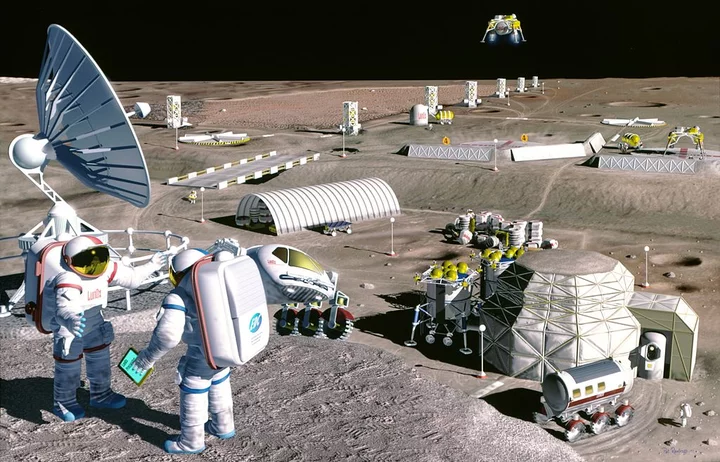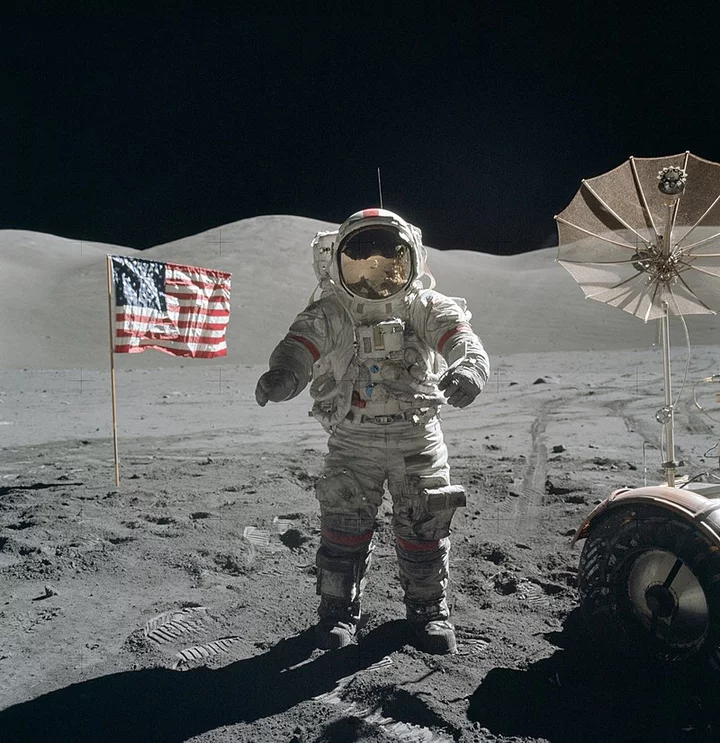“I
think a lot of people are working in the right direction, and a lot
of people are working together really well. We would just like to
know which destination we’re going to, so we can really focus our
efforts to make sure we can send folks there.”
— Mike Seibert, lead spacecraft systems engineer at JPL and an Opportunity (Mars rover) driver
###
Seibert probably knows as much as anyone about the crazy politics involved in NASA’s decision to focus on either Mars or the moon. When he made those comments a few years back, the path was open: either the easy goal — the moon — or the hard one — Mars. Since then, NASA has firmly, perhaps irrevocably for the foreseeable future, opted to take the easy path, back to the moon. For one obvious reason — because it can. Fifty years of technological improvements after the last Apollo mission (Apollo 17), of course it can. Where’s the challenge in that? The reality is that NASA isn’t responding to a challenge, but to a perceived threat.
At the height of the Cold War, five years after the USSR had launched Sputnik into Earth orbit, JFK told 40,000 people at Rice University that the US would put “a man on the moon” before the end of the 1960s “because that challenge is one that we are willing to accept, one we are unwilling to postpone, and one which we intend to win.” That is, if we don’t get there first, the Ruskies will. (The race was all over by 1965, with the USSR all but ceding the race to the moon to the US.)
The threat now — essentially why we’re going back to the moon — isn’t the USSR/Russia anymore, it’s China. Bill Nelson, NASA director, was unabashedly explicit in a recent interview. “We don’t want China suddenly getting there and saying, ‘This is our exclusive territory.’” Which is BS. The six Apollo landings left six US flags — not UN flags — on the moon, but as far as I’m aware, that didn’t make the moon our 51st State.
Mining the moon for oxygen from volcanic soil near the Apollo 17 landing site. (NASA/SAIC/Pat Rawlings)
If you look for why we’re going back to the moon, other than this fatuous Chinese threat, you’ll hear all sorts of equally fatuous reasons. As I say, the main one is that we can. Then there’s the idea that the moon will be a testing ground for Mars. It isn’t, and won’t be. I wrote about the jagged and corrosive lunar dust here — which will be a major disincentive to lunar exploration (Mars dust, eroded by the wind, is much more benign, more like dust here on Earth). Then there’s this notion that water on the moon can be mined and converted into rocket fuel. Well sorta. It’s in the form of ice. Deep frozen ice. In craters permanently in shadow, at about 25 degrees Celsius above absolute zero. Getting this stuff out isn’t a trivial problem, then you’ve got the challenge of separating it into its constituent oxygen and hydrogen (lots of energy needed for that) before storing and shipping…
Gene Cernan, 12/17/1972. After three lunar excursions, Cernan’s and Harrison Schmitt’s suits had been abraded by sharp lunar dust to the point where a fourth excursion wouldn’t have been safe. (NASA)
Then there’s the totally different EDL (entry, descent, landing) requirements. To drop down to the airless moon from orbit, you just need a reliable retrorocket, per “The Eagle has landed.” Mars, you’re hitting the planet’s thin atmosphere at around Mach 2, enough to burn you up but not enough to slow you down efficiently. Oh, and then there’s gravity — around 18% of Earth’s at the moon, but 38% on Mars. And obtaining liquid water on Mars will be a snap compared to the moon.
As if all that isn’t enough, it takes three days to reach the moon, six months to Mars, with a round trip (because of Mars’ and Earth’s relative orbits) over two years. Radio communications to the moon lag about a second each way; between here and Mars, five to 20 minutes.
Bottom line, it’s ridiculous to claim that our current moon adventure will prepare us for Mars.
Early mission to Mars. (NASA/JPL-Caltech)
As usual, the real problem is money, since it’s a zero sum game; it’s either Mars or the moon, and NASA’s current focus on the moon will have a direct effect on any future Mars ventures. I hate to say it, but for Mars, we’re going to have to put our hopes on Elon (bless his black heart) Musk and SpaceX, with SpaceX’s Starship spacecraft and Super Heavy rocket. I wish it were otherwise, but, you know, money talks.



CLICK TO MANAGE